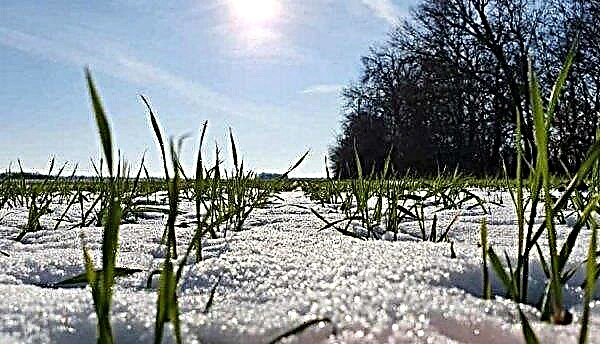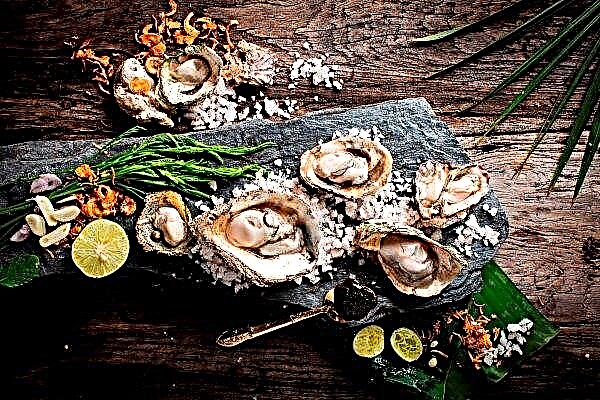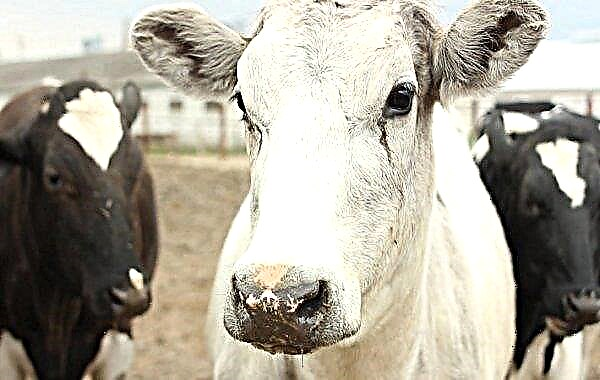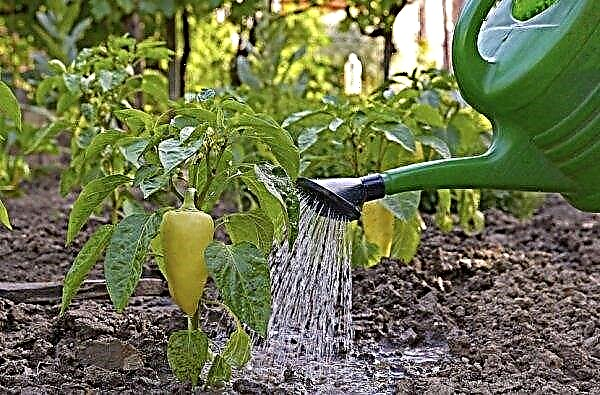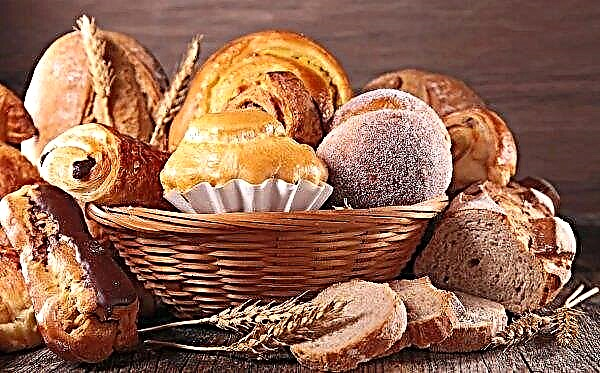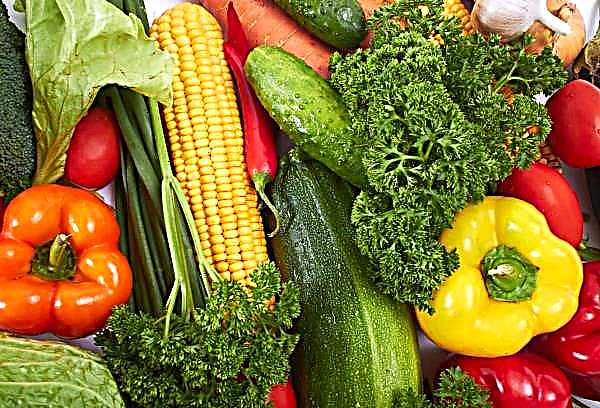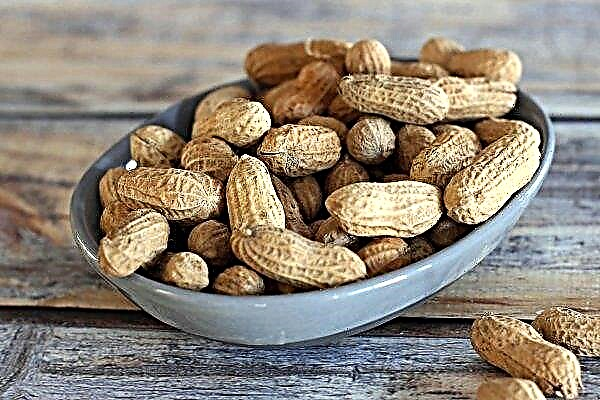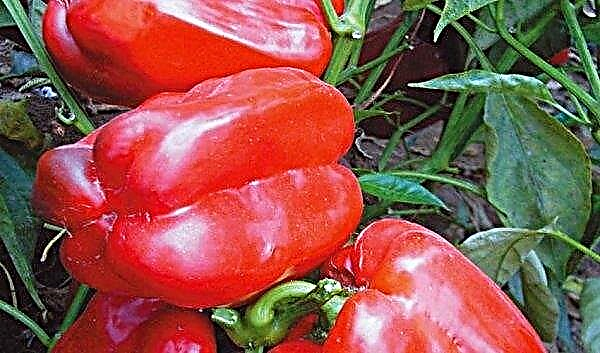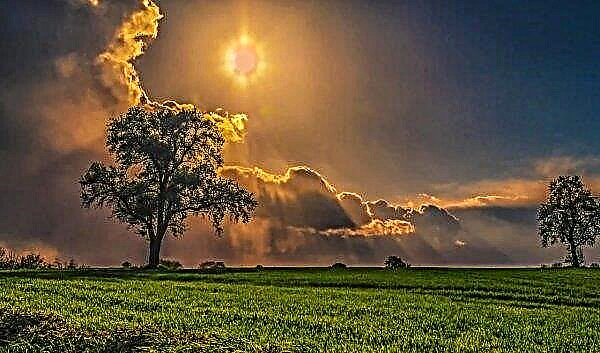Today there are many table varieties of potatoes, each of which has its own strengths and weaknesses. Some of them are more popular, others are less known, but in any case, it is worth exploring their main characteristics. This article will discuss one of the representatives of potatoes under the interesting name Labadia, and what exactly is this variety remarkable for and what gardening rules should a gardener know about - read on.
History of the origin of Labadia
Labadia is a Dutch potato variety bred in the Netherlands by Stet Holland B.V. He entered the State Register of the Russian Federation in 2010 and since then has been actively cultivated in various regions of the country, although it is recommended for cultivation in the Central, Volga, North Caucasian and Southern regions of Russia.
Did you know? Green potato tubers contain the toxic substance solanin, which in large quantities can cause serious poisoning. True, in order to get poisoned with such potatoes you will have to eat at least a kilogram of raw tubers or a few pieces of berries, which is unlikely for anyone to come to a head.
Potato Labadia is highly resistant to prolonged drought and does not place high demands on the composition of the soil in which it is grown. In warm climatic zones, when the tubers are pretreated with biostimulants of growth, it is possible to harvest not one but two tuber crops per season.
Description and specifications
The description of the variety should begin with a description of the potato plant itself and its tubers, although a description of the advantages and disadvantages of the variety as a whole will be no less relevant.
Plants and fruit
Labadia potato bushes are vigorous plants with straight or semi-spreading shoots and large light green leaves, with weak waviness along the edges. All stems are powerful and well developed, and during flowering densely strewn with white flowers. Shoots of the same type, aligned. Proper care will allow you to get a good harvest. At the end of the growing season, 6–9 fruits are formed under each bush, mostly oblong oval in shape, with small eyes of medium size, deepened into the surface of the fruit. Their yellow skin is slightly rough or completely smooth, thin. The flesh hiding beneath it is a light yellow color and a dense structure. It contains 12.2-16.4% of starch, 20.7-21.3% of dry matter. The weight of one tuber is 100–150 g, and the commodity yield is 89–95%.
Proper care will allow you to get a good harvest. At the end of the growing season, 6–9 fruits are formed under each bush, mostly oblong oval in shape, with small eyes of medium size, deepened into the surface of the fruit. Their yellow skin is slightly rough or completely smooth, thin. The flesh hiding beneath it is a light yellow color and a dense structure. It contains 12.2-16.4% of starch, 20.7-21.3% of dry matter. The weight of one tuber is 100–150 g, and the commodity yield is 89–95%.
Application
Labadia potatoes are characterized by excellent taste and are suitable for preparing a wide variety of dishes. This is the best option for baking (both separately and as part of other dishes), frying, cooking and cooking first courses. True, it is worth paying attention to the tendency of the fruit to boil, because of which time on fire will have to be halved as usual or add the product to the dish a few minutes later. Commercial qualities, durability and transportability of Labadia potatoes are at a high level, therefore, after harvesting, you can use it all winter without fear of loss of appearance or taste
Commercial qualities, durability and transportability of Labadia potatoes are at a high level, therefore, after harvesting, you can use it all winter without fear of loss of appearance or taste
Advantages and disadvantages
- Potato Labadia has many advantages, the main among which are the following:
- high yield of varieties;
- good taste;
- the possibility of long-term transportation of tubers;
- good keeping performance;
- good commercial properties: all yellow tubers are large, one-dimensional, with a slightly rough surface;
- high and stable productivity;
- drought tolerance, good resistance to certain diseases;
- high adaptive abilities to different types of soils.
- The main disadvantages of the variety are:
- slow germination of tubers that were planted on the site without prior germination;
- the impossibility of planting in early spring, while the soil is not warm enough.
Rules for growing potatoes
Potato cultivation begins with the selection and preparation of the site, processing of planting material and compliance with all technological requirements for the placement of tubers in the garden, which means that already at this stage it is worth paying enough attention to each action performed.
Did you know? There is a popular way to determine the level of acidity of the soil, suitable for planting potatoes on the site. So, if before that dandelions, clover, wheat grass, chamomile or coltsfoot grew on it, then the potatoes here will feel great too, bringing a plentiful harvest of fruits.
Site and ground preparation
When choosing a site for planting potatoes, you should pay attention only to the flat terrain, sufficiently illuminated by the sun's rays, but hidden from them at lunch time. In addition, it is important to protect potato bushes from sudden gusts of cold wind, so if possible it is better to place them on the south side of the site or on buildings located on the north side of the garden. Potatoes need to be planted in soil that has already been warmed up to about + 8 ° C to a depth of about 9 centimeters. As for soil acidity in the selected area, it is best if it is soil with indicators in the range of 5.1–6.0 pH. In autumn, it is enriched with manure infused with bird droppings (3-5 kg per 1 m²), potash and superphosphate fertilizers (can be complex mineral compositions), at the rate of 30-50 g of substance per 1 m². Having dug up the soil together with the fertilizers introduced into it, it remains only to level it and wait for spring to dig holes and plant potatoes.
Potatoes need to be planted in soil that has already been warmed up to about + 8 ° C to a depth of about 9 centimeters. As for soil acidity in the selected area, it is best if it is soil with indicators in the range of 5.1–6.0 pH. In autumn, it is enriched with manure infused with bird droppings (3-5 kg per 1 m²), potash and superphosphate fertilizers (can be complex mineral compositions), at the rate of 30-50 g of substance per 1 m². Having dug up the soil together with the fertilizers introduced into it, it remains only to level it and wait for spring to dig holes and plant potatoes.
Pre-planting
Labadia potato tubers sprout better only after pre-planting, and if all the steps are done correctly, then in the southern regions you can harvest twice a year. Preparatory activities are based on several sequential actions:
- germinating selected specimens in the light for 20-30 days (usually this time is enough for the appearance of strong shoots);
- treatment with growth stimulants (for example, Epin or Poteytinom).
 After completing such pre-planting measures, you need to leave the potatoes to dry completely in a clean and dry place, and then you can proceed to plant them on the site. You can’t rinse the treated tubers, as you will remove all the useful chemical composition from them.
After completing such pre-planting measures, you need to leave the potatoes to dry completely in a clean and dry place, and then you can proceed to plant them on the site. You can’t rinse the treated tubers, as you will remove all the useful chemical composition from them.Landing technology
The scheme of planting Labadia potatoes provides for the placement of holes according to the scheme of 35 × 60 cm (the distance between adjacent plants in a row and the rows themselves in the garden). Potatoes can be planted in the holes only when the earth warms up to + 8 ° С comfortable for it, deepening the tubers by 8–10 cm. No more than two tubers are put in one hole, sprinkling them with soil and slightly tamping it. Subject to all requirements for the planting process and proper preparation of planting material, the emerged shoots will be uniform and friendly.
No more than two tubers are put in one hole, sprinkling them with soil and slightly tamping it. Subject to all requirements for the planting process and proper preparation of planting material, the emerged shoots will be uniform and friendly.
Video: planting potatoes
Care Features
After putting potatoes into the holes, a long period of care for it begins, which will last until the harvest. As with the cultivation of other varieties, Labadiya potatoes need regular watering, top dressing, cultivating and hilling the soil, each of these actions having its own characteristics.
Important! The application of any fertilizer must be combined with irrigation so that chemicals do not burn the tubers. Mineral mixtures are dissolved in water and simply poured over potato bushes, and organics are added soon after the next watering.
Watering and feeding
The regularity of irrigation and the rate of liquid application directly depend on the characteristics of the climatic region of cultivation and the abundance of natural rainfall during the growing season. With increased humidity and frequent rains, 1 watering in a few weeks is enough, and then, starting with the active flowering of plants (at this time, potato bushes need an increased amount of moisture). With moderate rainfall, potatoes are watered three times a season: after emergence, during the formation of buds and at the end of flowering plants. With more frequent moistening of the soil, waterlogging and decay of a large part of the crop is possible. As for fertilizers, for the first time the soil under the potatoes is fertilized before planting, using mainly organic compounds. The second time the planted plants are fed a month later after they are placed on the site, using complex mineral mixtures with the content of superphosphate, sulfate, potassium chloride. Nitrate for fertilizers should be used very carefully so that nitrates do not accumulate in the tubers.
With moderate rainfall, potatoes are watered three times a season: after emergence, during the formation of buds and at the end of flowering plants. With more frequent moistening of the soil, waterlogging and decay of a large part of the crop is possible. As for fertilizers, for the first time the soil under the potatoes is fertilized before planting, using mainly organic compounds. The second time the planted plants are fed a month later after they are placed on the site, using complex mineral mixtures with the content of superphosphate, sulfate, potassium chloride. Nitrate for fertilizers should be used very carefully so that nitrates do not accumulate in the tubers. Potatoes are fertilized after heavy watering
Potatoes are fertilized after heavy watering
Soil loosening
For normal growth and rapid mass gain, the newly formed tubers need a sufficient amount of air entering the roots of the potato in the process of loosening the beds. Due to the formation of a peel on the surface, air exchange between the root system and the external environment is always difficult, so it is recommended to fluff the soil soon after watering, raking the ground under potato bushes. Tall bushes of Labadia potatoes spud high so that the large tubers that are forming do not turn green under the sun. Bushes are another important event, especially if they grow in areas well lit by the sun, since tubers close to the surface can turn green under the sun. The first time the potatoes are spudded at a stem part height of 12–15 cm, and the second time after a few more weeks, raking up a layer of earth 10–15 cm high. The last time the potato bushes spud immediately before flowering.
Tall bushes of Labadia potatoes spud high so that the large tubers that are forming do not turn green under the sun. Bushes are another important event, especially if they grow in areas well lit by the sun, since tubers close to the surface can turn green under the sun. The first time the potatoes are spudded at a stem part height of 12–15 cm, and the second time after a few more weeks, raking up a layer of earth 10–15 cm high. The last time the potato bushes spud immediately before flowering.
Pest and Disease Control
Variety Labadia is characterized by good resistance to potato cancer, wrinkled mosaic and defeat golden nematode. Also, moderate resistance of the plant to the leaf curl virus, banded mosaic and late blight is noted, however, in the latter case, the likelihood of these problems can not be excluded.
Important! When creating a working solution of a particular drug, it is worthwhile to strictly adhere to the instructions on the package, observing the proportions of the substance and water. After spraying the plants, unused residues of the mixture must be disposed of.
In general, when growing Labadia potatoes, a gardener may encounter the following difficulties:
- Scab - A disease of fungal origin, characterized by damage to tubers: black or brown cracks with rough edges appear on them. The fungus spreads rapidly at elevated temperatures and reduces the starchiness of tubers. To prevent infection of young potatoes, before planting it on the site, it is worth processing all the fruits with Fito Plus preparations, after which you can additionally spray potato bushes during the growing season.
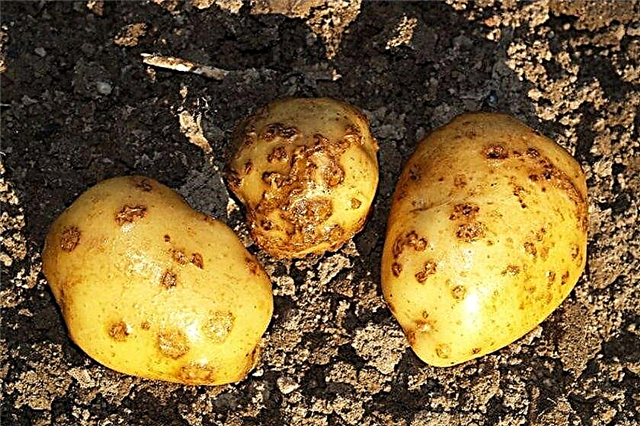
- Late blight - An ailment manifested first by dark spots, and then a gray coating on the leaves and stems of potato bushes. To prevent the appearance and spread of fungus in the area, it is important to observe the irrigation regime and avoid overmoistening of potatoes. In the fight against the problem, special fungicidal preparations like Bactofit, Quadrice, Infinito or Ridomil will help. They often perform pre-planting treatment of tubers.
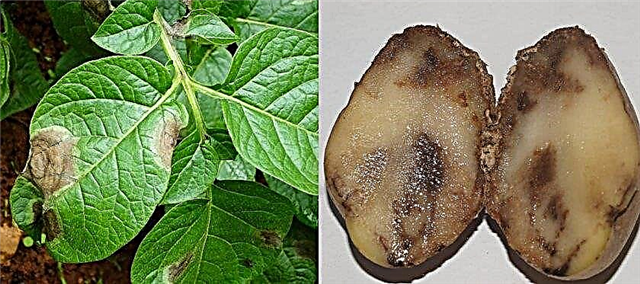
- Brown bacterial rot - an ailment that causes the tops to wither during the period of active flowering of the plant, provokes yellowing of the leaves and rotting of potato tubers. If last year this problem was already discovered in the garden, then the subsequent planting of potatoes here is extremely undesirable. Rotten potatoes are processed using the Bactofit preparation, spraying tubers before planting, and the bushes themselves twice before flowering, with a break of 2 weeks.

- Potato moth - A popular pest of potato beds. The plant and tubers suffer mainly from small larvae, 1–1.3 cm long, which suck the juice from the leaves and stems of the plants, leaving small holes (often even in tubers). The main preventive measure in this case is the earthing up of potato bushes, but in case of mass infection one of the known insecticidal preparations will have to be used: for example, Calypso or Coragen.
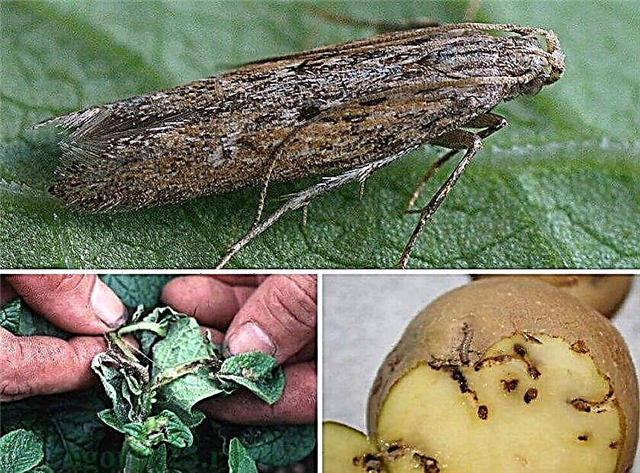
Harvesting and storage
The Labadia potato harvest ripens in 70–85 days, so when planting in May, you can dig up potatoes in late August or early September. About a week before this, green or already slightly yellowed tops need to be mowed so that the potatoes in the ground are covered with a denser skin.
Dug up tubers are laid out on the site and ventilated, after which they are dried in dark rooms and stored in boxes or bags, after sorting them by size. It is not worth it to leave potatoes in the garden for a long time, especially if potato moth has already been noticed in this area. In general, the process of growing Labadia varieties will not require excessive efforts, and the result will surely please any gardener: the energy expended will be fully compensated by tasty and healthy fruits for universal use.
In general, the process of growing Labadia varieties will not require excessive efforts, and the result will surely please any gardener: the energy expended will be fully compensated by tasty and healthy fruits for universal use.





